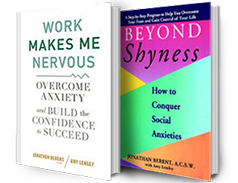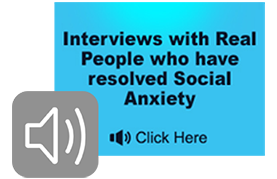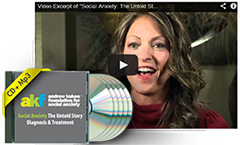A fascinating dynamic is the reality that there are so many intelligent, highly achieving, successful adults who strive for perfection so obsessively that they have serious problems with the performance anxiety of public speaking. In fact, fear of public speaking is the #1 phobia in the world! Concurrently, there are so many intelligent children who are handicapped by selective mutism; a condition driven by performance anxiety and obsessiveness. Amazingly; seven out of 1000 children have SM. Six out of 1000 have autism. Why is there so little help available for SM and so much for autism? Here is the answer. SM, like public speaking anxiety, is an insidious problem that can be hidden unlike autism. This reference to “hidden” refers to what families often do until there is an issue which is forced; usually by schools; giving parents some kind of feedback, or often ultimatums. The performance anxiety of SM and public speaking accrue, or get worse with time, due to the tremendous amount of confusion, rationalization, and denial by those suffering. In other words, the anxiety works its way developmentally, over time, into the personality.
The confusion regarding the performance anxiety of public speaking and SM can be quite complex and insidiously integrated into life. Consider the executive who schedules vacations when he/she knows that a group presentation is on the calendar. Consider the salesman who relies on one to one interactions and finds ways not to get in front of groups, or the vice president of a major company who has been a master of avoiding monologues. These are subtle examples of anxiety turning into a phobia. More obvious are examples characterized by total avoidance!
In the case of SM; which is a speaking phobia, how about the principal of an elementary school who said to the parents of 5 year old with a serious case, “What are you worried about; she’s only 5; you have too much stress?” What a negatively seductive suggestion for parents! Wouldn’t it be easier to believe the words of the principal? Or how about the pediatrician who says to the parents of an extremely anxious child, “She’s just shy; she’ll grow out of it.”
I’ve been around the block too much. I’ve seen more social anxiety clinically than any other therapist. These suggestions are toxic!!
The degree of behavioral “avoidance” and degree of internal discomfort for both public speaking anxiety and SM determines the degree of the problem. Internal discomfort for public speaking usually manifests itself by panic and obsessive worry about appearing noticeably nervous. Internal discomfort for SM manifests itself by the “detached” affect of children, or by clinging behavior, or temper tantrums.
“Enabling” (any behavior that inhibits growth and potential) is more obvious with SM and more secretive and manipulative with public speaking.
In my clinical experience since 1978 with thousands of individuals of all ages I have seen performance anxiety create depression, substance abuse, career and academic dysfunction and more. I have seen everything from a total cure, to the problem being permanent, and everything in between. There probably is nothing I have not heard or seen regarding performance anxiety.
It is quite disturbing when I hear stories of professionals who worsen SM by relying on reward systems and accommodatingly enabling strategies for children. It is also distressful when public speaking anxiety sufferers explain to me their previous unproductive therapeutic experiences with their learned“techniques”.
You may be interested in accessing my free library of interviews with real patients/families who have resolved public speaking anxiety, SM, and related problems. These interviews are rich with content that can help you. They may be one of a kind!
Here are some “tips” for performance anxiety:
- The internal excessive “critical script” needs to be identified. Believe it or not; anxiety starts with a thought, either conscious or not.
- The physiology of performance (adrenaline experiences) need to be understood, in order to be controlled.
- “Performance” needs to be differentiated from identity or personhood.
- “Enabling” need to be identified so that it can be replaced with “nurturing” strategies.
- “Nurturing” is defined as “provide support; promote growth”; certainly not “rescuing” or avoiding!




